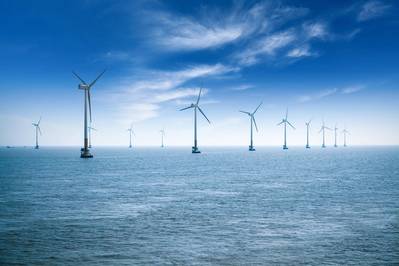Longitude Engineering – a specialist marine engineering subsidiary of the LOC Group – working closely with Rampion and its contractors, has developed an analysis and modeling process to fully understand why large monopiles oscillate in relatively small wave heights; and to increase the operating window for their installation. Monopiles and turbines are increasing in size as wind farms move farther offshore.
At the Rampion Offshore Wind Farm, which is currently under construction off the south coast of the U.K., the developer was concerned that these large structures were beginning to oscillate in relatively small wave heights. This was affecting the operational window for lowering them into position.
As installation limits are generally set by operator experience, Rampion recognized that the oscillation had the potential to cause difficulties and invited Longitude to work with them to develop a more in-depth understanding of the problem and to assist with developing solutions and more rigorous guidelines.
Peter Kingsland, Principal Consultant/Naval Architect at Longitude explained, “The piles used for the Rampion site weigh up to 850 [metric tons] which is close the working limit of the crane. Dynamic effects can lead to much larger forces than purely static loads and so it was important to understand the conditions which caused the piles to oscillate. We developed a numerical model of the pile and the rigging which we ran under a variety of conditions."
"We also oversaw a series of tank tests and advised on and post processed data from instrumentation on the jack-up vessels to measure the motion of the piles as they were being lowered. This allowed us to develop a robust set of operating guidelines which gave confidence to Rampion and its marine warranty surveyors that pile installation would remain safe."
"In effect, working closely with Rampion and its contractors, we were able to widen the safe operating window to give more flexibility to the installation process.”
In addition to this, and following an initiative from Rampion, Longitude also collaborated with the manufacturers of the crane tugger winch control system to numerically model its functionality and to develop an enhanced control system that would sense and damp down the motion of the piles.
This work was coordinated and implemented by Rampion Offshore Wind and is the first of its kind to be developed and applied to the offshore wind farm sector and has the potential to be used in a variety of other offshore applications.
Longitude has a track record of working on a variety of renewable projects including cable installations, vessel conversions metocean studies, wave and tidal energy devices, wind farm component transportation and subsea deployment.
This latest project represents just one of the ways Longitude is working alongside the renewables sector to develop current methods and improve design capability.




